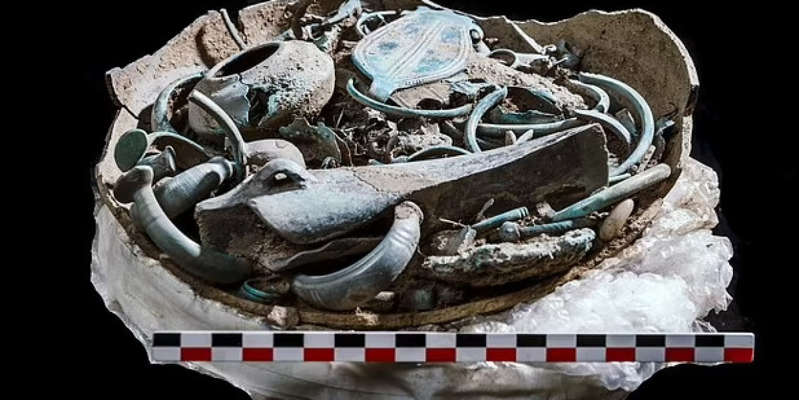
Ruins of the lost capital of the Celts unearthed in France
A Bronze Age site in France may represent a lost Celtic capital, archaeologists said. They found a number of artifacts indicating this: parts of chariots, weapons, jewelry, according to The Daily Mail.
Excavations were carried out in the French department of Allier, northwest of Lyon. A team from the University of Toulouse discovered a large (about 30 hectares) fortified settlement that had a double row of ramparts and stone walls 20 feet (6.1 m) high.
Hundreds of objects have survived in the ground that scientists believe were buried around 800 BC as part of a religious ritual. Such an abundance is rare in the French hills, the group noted.
The found site is one of the richest Bronze Age metal deposits ever discovered in Europe. Historians note that during the time of the Celts, modern Allier was an important economic center, since a navigable river ran through its territory. In addition, tin deposits were developed there.
“The excavations have not yet been completed, but we already have about 800 objects, most of which are intact. This is also the first time that we have found four untouched treasures, ”the archaeologists said.
Presumably, the treasures were an offering to the gods. Decorations and symbols on bronze objects refer to the cult of the sun, which was a very important deity at that time in Europe as well as in Egypt. In addition, white and black river pebbles were attached to jewelry and weapons. Interestingly, similar treasures from the same time were found in Greece.
Artifacts help researchers understand what life might have been like in Celtic society around 2,800 years ago. In addition to weapons and valuables, they found items related to agriculture, tools for the production of textiles and ceramics, equipment for processing wood and metal, as well as swords and spearheads. The team found axes from southwest England and beads from Italy and the Baltic states – evidence that the locals were engaged in a lively trade.
Scientists have previously conducted a scan of a Celtic tomb. They found an unidentified artifact there.

